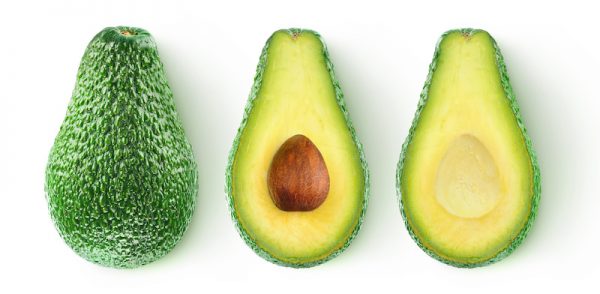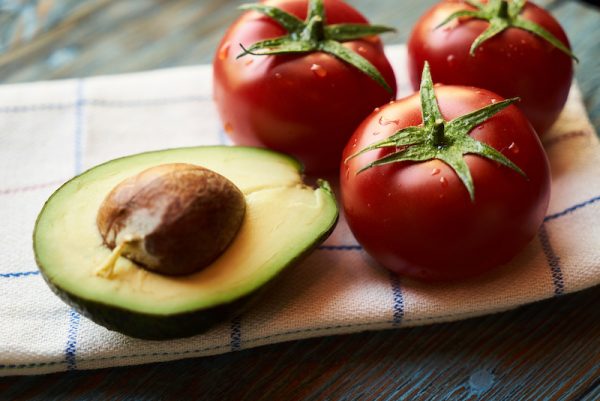I think avocados are one of those things you either love or hate. I happen to love them. Sometimes I’ll treat myself to a delicious avocado and tomato salad for lunch. It’s easy to make and easy to eat. Here’s my recipe:
Diane’s avocado and tomato salad
Ingredients
- Ripe avocado
- Medium to large tomato
Small chunk of cheese (I use cheddar or feta, but feta might be a healthier choice.)- Olive oil
- Balsamic vinegar
- Oregano
- Salt and pepper
Instructions
- Peel and pit avocado (see video below for easy directions). Slice or cut into chunks.
- Cut tomato into bite-size pieces
- Cut cheese into chunks or crumble, depending on what kind you use.
- Mix together in a bowl.
- Add a few splashes of oil and vinegar
- Sprinkle in about 1 tsp of oregano
- Add salt and pepper, if needed
- Best eaten with a spoon, in my opinion.
Are avocados good for you? You bet!
Here’s what registered dietitian Kitty Broihier, from NutriComm Inc., has to say:
Most folks are pretty aware that avocados are now considered healthy instead of a “no-no” food. Luckily, those days of fat-phobia are past us.
So, what are you getting when you add an avocado? For starters, you get a slew of vitamins and minerals (as is common with most produce), including C, E, K and a host of B-vitamins, magnesium, and potassium. It’s also a source of fiber, even though you wouldn’t know it because of its creamy texture (half an avocado has 5g of fiber!). Other health-promoting plant compounds, such as carotenoids, are found in avocados, too.
If heart health is your concern, don’t worry that avocados will raise your cholesterol level—they don’t contain cholesterol, first of all, and their monounsaturated fats actually can help lower “bad” LDL cholesterol and support “good” HDL cholesterol levels—unlike saturated fats.
One thing I would caution people about regarding avocado is that, because they do contain a good dose of healthy, monounsaturated fats, they are also quite caloric. Adding an entire avocado to your eating plan every day (considered 3 servings) will add roughly 250 calories. That’s a lot for
a fruit !By the way, I’ve frozen ripe avocado in chunks in a freezer bag (push out as much air as possible) and it worked great to hold the fruit in a fresh-looking, green state for a week or two—consider it when your avocados all ripen at the same time.
Kitty Broihier, MS, RD, LD
Speaking of which, do you know how to tell when an avocado is ripe? Hold it in the palm of your hand and gently squeeze. If it’s ripe and ready to eat, it will feel slightly soft, but not mushy. If it’s firm, leave it at room temperature for a day or two to ripen. If it’s overripe, it will feel wicked mushy and it’s likely the skin will be dark green with some dents here and there.

How to open an avocado
First of all, wash your hands well with soap and water and rinse the avocado under running water. That’s right. You should always rinse the skin of fruits and vegetables even if you’re going to peel them. Do whatever you can to reduce the risk of food-borne illnesses.
And now, a handy-dandy how-to video featuring Jackie Conn, general manager of WW Maine (formerly Weight Watchers). Who knew opening an avocado could be so easy. If you don’t have the tool she uses, slice it open with a knife and scoop out the pit with a spoon. If the avocado is ripe, you should be able to easily peel away the skin.
Jackie and I didn’t let that avocado go to waste. We ate it as is and it was delicious! If you prefer to get a fancier, here’s another recipe for you, courtesy of WW.
Grilled Chicken with Avocado-Pineapple Salsa
(Serves four)
Ingredients
- 1/4 cup fresh lime juice
- 3 TBS fresh chopped cilantro
- 3/4 tsp ground cumin
- 1 tsp minced garlic
- 1 1/2 cups diced pineapple
- 2 TBS chopped red onion
- 1/4 cup pineapple juice
- 1 tsp extra virgin olive oil
- 1/2 tsp salt
- 1 pound boneless, skinless chicken breasts
- 1 diced medium avocado
- Cooking spray
Instructions
- In a small bowl, combine lime juice, pineapple juice, cilantro, oil, 1/4 teaspoon cumin and salt; remove 5 tablespoons juice mixture to a zip-top food storage bag (or a glass container with lid). Set bowl with remaining juice mixture aside.
- Add garlic and remaining 1/2 teaspoon cumin to bag (or glass container). Add chicken to bag (or container); seal bag and turn to coat with mixture (or toss in container and then cover). Refrigerate at least 30 minutes or up to several hours.
- Meanwhile, to make salsa, add pineapple, avocado and onion to bowl with remaining lime juice mixture; toss gently to coat.
- Off heat, coat grill rack or stove-top grill pan with cooking spray; heat to medium-high heat.
- Remove chicken from marinade; discard marinade. Grill chicken until cooked through, flipping once, about 5 to 7 minutes per side.
- Transfer chicken to plates and top with salsa; season with salt and serve with lime wedges, if desired. Yields 1 chicken breast and about 1/2 cup salsa per serving.
Notes
There’s no need to buy pineapple juice for this recipe. Prep the pineapple the day before, store it in a glass container with a lid and refrigerate overnight. There should be enough juice accumulated in the bottom of your container by the next day to use in the recipe. If not, however, use canned pineapple juice instead. Turn this recipe into a salad by cooling the chicken and tossing it with the salsa; serve over a bed of greens.
Never tried an avocado before? Do it!





Leave A Comment